Planning your Borneo itinerary and looking for opportunities to see the island’s incredible wildlife? Dreaming of spotting an orangutan in the wild? Keen to see Hornbills, Proboscis monkeys or Borneo pygmy elephants? Then, make sure to add a Kinabatangan River cruise to your itinerary. It is one of the best wildlife-watching areas in Southeast Asia.
This guide to visiting the Kinabatangan River is composed of two parts. The first part covers the logistics of getting to Kinabatangan River and booking your Kinabatangan River cruise. The second half describes the experience of cruising the river – the story I wrote for Sydney’s Sunday Telegraph about my recent trip.
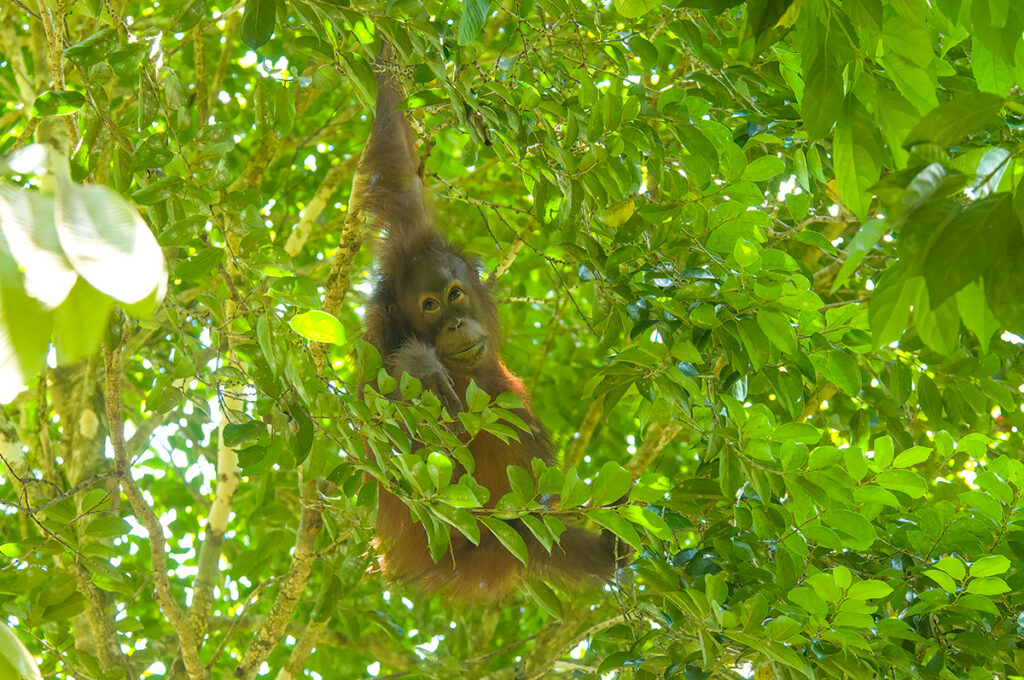
I visited the Kinabatangan River several times, as it took me a few trips to track down Borneo’s elusive wild cats. You can read more about my wild cat spotting adventures on the Kinabatangan River in my story about searching for a Flat-headed cat. And if, like me, you can’t get enough of wild cats, check out my stories about tracking the magnificent Clouded leopard of Borneo in Deramakot Forest Reserve and Danum Valley.
Kinabatangan River Cruise Tours from Sandakan
The easiest way to cruise the Kinabatangan River is by joining an organised tour from Sandakan. If you are short on time, you can take a day trip with the Kinabatangan River Cruise from Sandakan. This tour includes a visit to the famous Gomantong Cave and a river cruise.
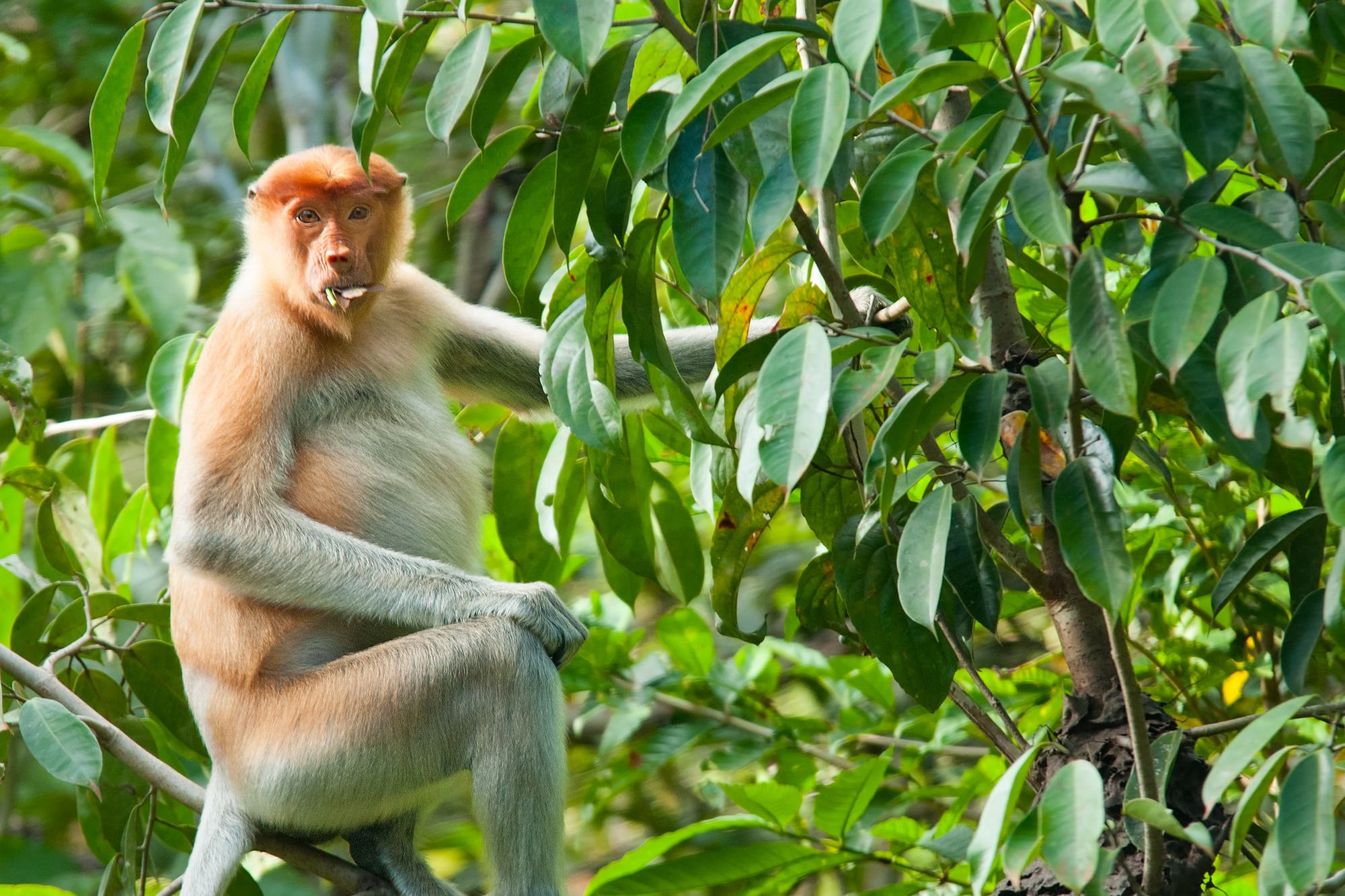
However, while a day tour is convenient, it doesn’t give you enough time to properly appreciate the incredible biodiversity of the Kinabatangan River. I would recommend spending at least 2 full days on the river. The 3 Days/2 Nights at Tanjung Bulat Jungle Camp Kinabatangan is a better alternative.
And if you travel specifically for wildlife, consider the 8-Day East Sabah adventure from Kota Kinabalu. This incredible tour includes several cruises on the Kinabatangan River, a stay at the gorgeous Borneo Natural Sukau Bilit Resort, a visit to Sepilok Orangutan Rehabilitation Centre and a boat trip to Turtle Island and turtle hatchery.
How to Visit Kinabatangan River Independently
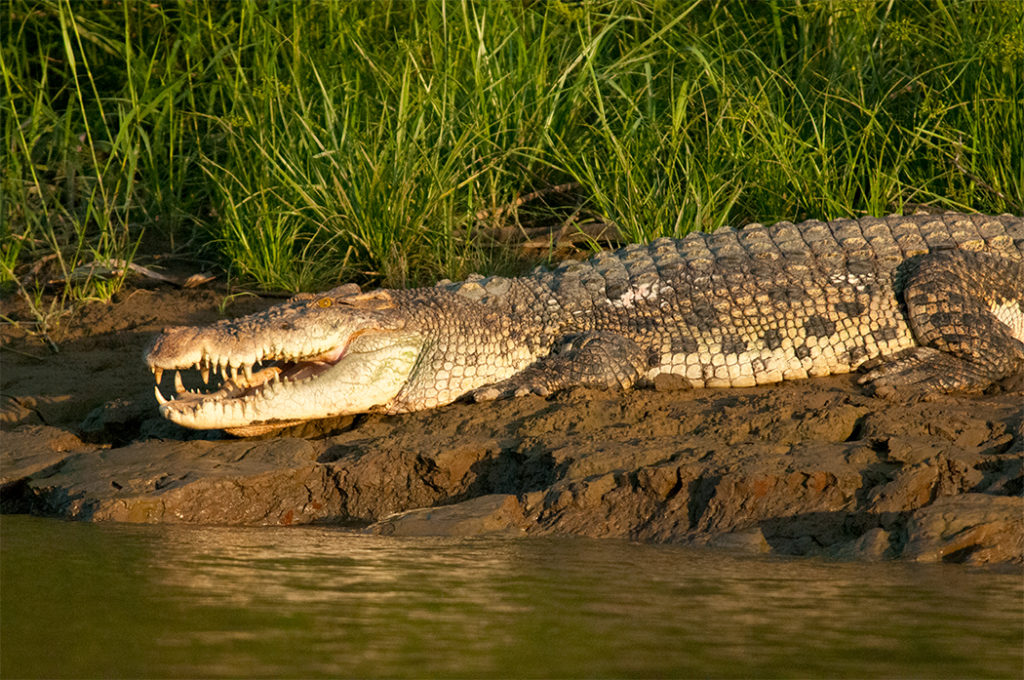
If you prefer independent exploration or want to spend more time on the river, the best option is to base yourself in Sukau. Sukau is a tiny riverside village and an ideal spot for winding down and enjoying a tropical jungle getaway.
How to get to Sukau from Sandakan
Public Bus
There is no direct bus from Sandakan all the way to Sukau, but you can take the bus heading to Lahad Datu from the long-distance bus terminal and jump off at Sukau Junction, which is about 45 km from Sukau. Malaysian bus drivers speak decent English, so you won’t have trouble communicating where you want to be dropped off. The bus ride takes about 2 hours.
At the junction, you’ll find minivans waiting to take you to Sukau. If you would like to hedge your bets, you could try to arrange with your Sukau accommodation to be picked up at the Sukau junction.
Transfer with Mr Choy
Another option is to book your transfer to Sukau with the legendary Mr Choy. Mr Choy has been running transfers between Sandakan and Sukau in his minivan for several years now and has become a well-known transfer provider. To book a transfer with Mr Choy, contact him on WhatsApp at 019 536 1889 or send him an email at [email protected].
Where to Stay in Sukau
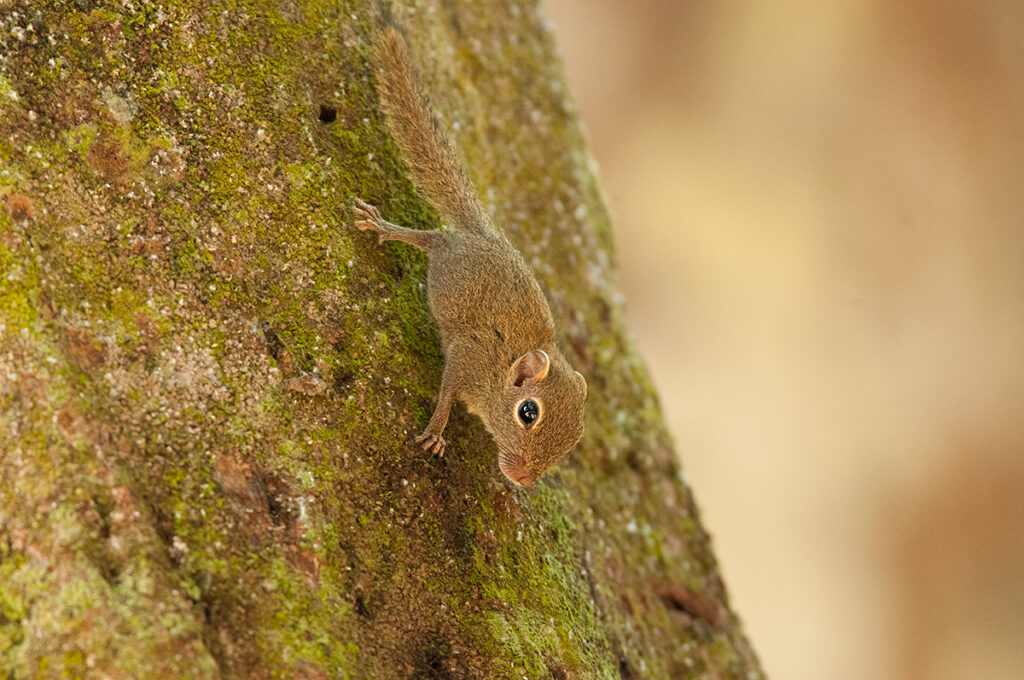
Sukau is a small village, but there are a few accommodation options in and around the village to suit different budgets.
Two wrap yourself in comfort and don’t mind climbing to the top of the hill, consider The Last Frontier Boutique Resort.
For a mid-range option, Sukau Tomanggong View Bed & Breakfast is one of the most popular.
And for a budget-friendly stay check out Sukau Backpackers B&B.
Kinabatangan River Cruise from Sukau
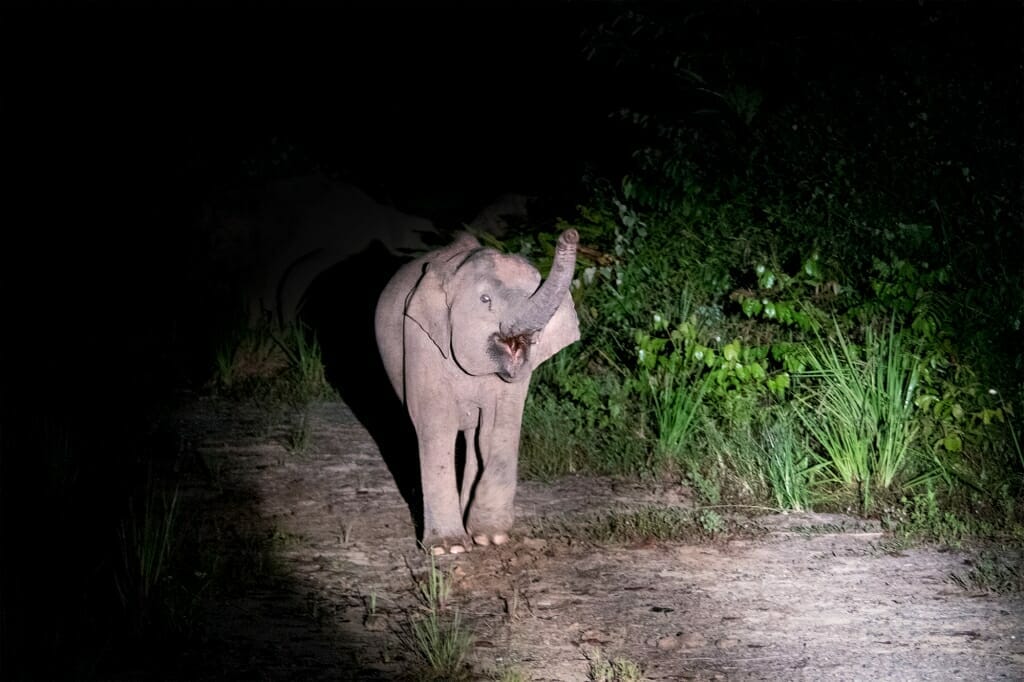
Since the river cruise is the main reason most people come to Sukau, all hotels in the village offer different cruise options.
There are three main types of Kinabatangan River cruises: Sunrise Cruise, Sunset Cruise, and Night Cruise.
The cruises run for 2 hours. They start by cruising along the main river and then follow some of the smaller tributaries. Depending on the season and the tides, cruses might travel to oxbow lakes on the river, which often turn up some of the shier and rarer species.
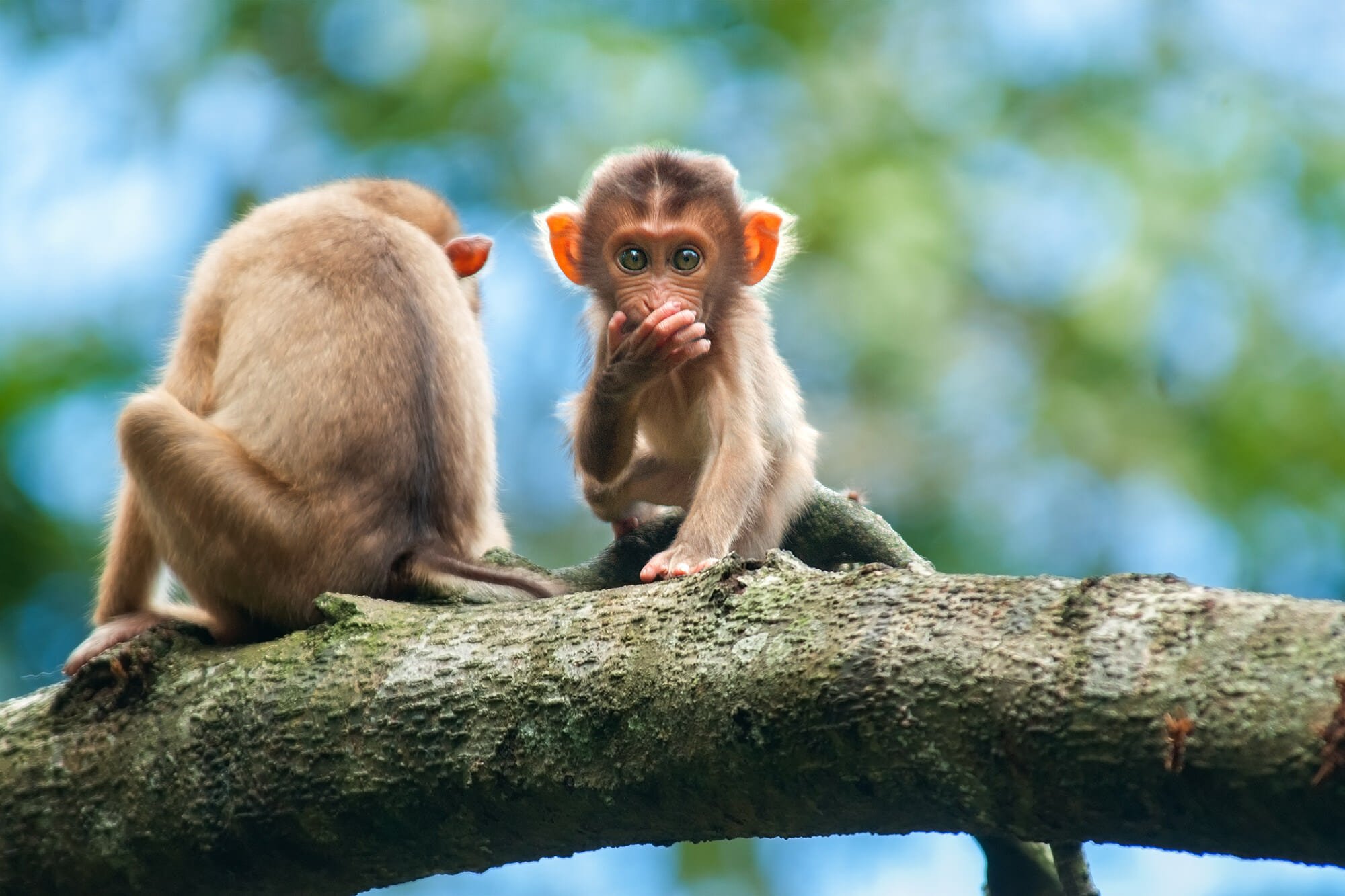
I recommend joining them all three cruises to maximize your wildlife-spotting opportunities. The sunrise and sunset cruises are pretty similar in terms of animal species you can see. They are great for spotting Proboscis monkeys and Pig-tailed macaques, several species of Hornbills, crocodiles, and colourful kingfishers. You also have a decent chance of spotting Orangutans and Pygmy elephants in daylight hours.
Night cruises reveal an entirely different face of the river. It is the time to spot civets, owls, and the rarer animals like the adorable Slow loris, Western tarsier, and, of course, the elusive Flat-headed cat.
If you are a keen wildlife watcher, you can also book your own boat and driver. This is what I did when I spent 5 nights on the river searching for the Flat-headed cat. Having your own boat gives you more flexibility in terms of which tributaries you visit and how long you stay on the river.
My Experence on Kinabatangan River Cruise
The moonless tropical night is perfectly still as we cruise along the Kinabatangan River in search of nocturnal Borneo wildlife. The beam of our spotlight dances across the curtain of the ghostly dark forest on the river bank. The only sounds that break the silence are the rhythmic puffing of the boat engine and the occasional squeaks of the Flying foxes gorging themselves on fruit high up in the dark canopy.
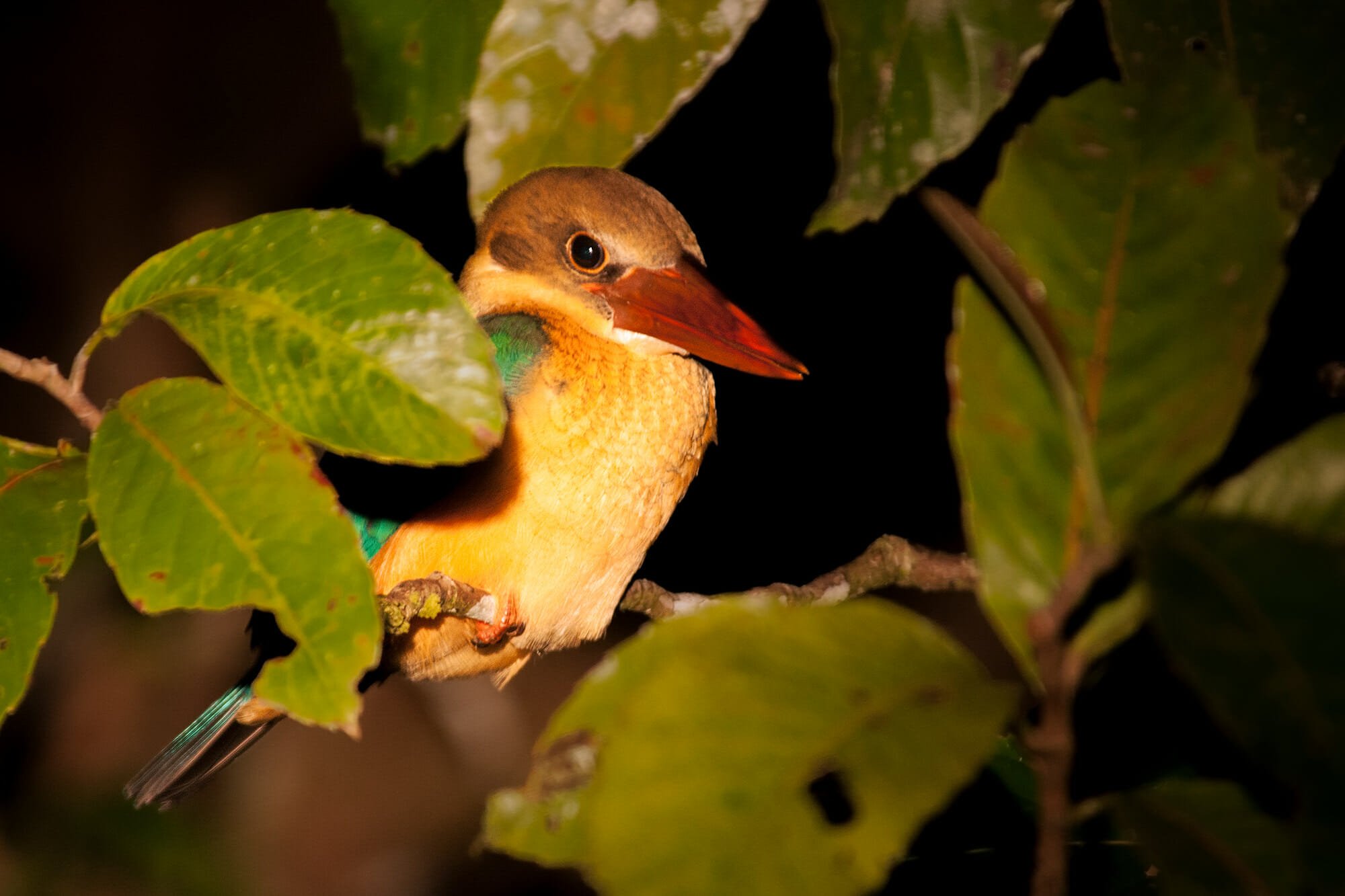
With me in the boat are my two companions, Jo from the U.K. and Jens from Sweden, as well as our two guides, Mike, who is guiding us for our entire two weeks in Borneo (including Danum Valley and Deramakot) and Osman, our host on the river for the next two nights. Both of them, we come to believe, possess superhuman vision when it comes to finding wildlife.
Within minutes, they are pointing out the usual suspects: Three-striped Palm civets, Malay civets, a Stork-billed kingfisher, and dozens of Buffy fish owls sitting on branches arching over the river like silent sentinels.

Soon, Osman spots something unusual on the bank, and the mood in the boat changes dramatically. Now, five pairs of eyes are glued to the centre of the spotlight beam. Mike sees the animal immediately. ‘It’s a Philippine slow loris. Very low in the tree’, he whispers excitedly, pointing out the animal’s location. We see it, too, now. What was just a pair of bright dots at first (loris’s eyes reflecting in the spotlight beam) now transforms into the cutest face imaginable.
Looking down at us with its cartoonishly large eyes, the loris appears as surprised to see us as we are to see it. We stare at each other in mute amazement.
Of all the wildlife-watching hotspots in Borneo, Kinabatangan River Sanctuary in the Malaysian state of Sabah is where you are most likely to experience wildlife up close. Sadly, the reason for this abundance is that the wildlife has nowhere else to go. Pushed by the encroaching oil palm plantations, the animals are trapped in the narrow stretch of forest on the river bank. If more land is cleared, we will lose this unexpected wildlife heaven for good. But for now, the loris is safe.
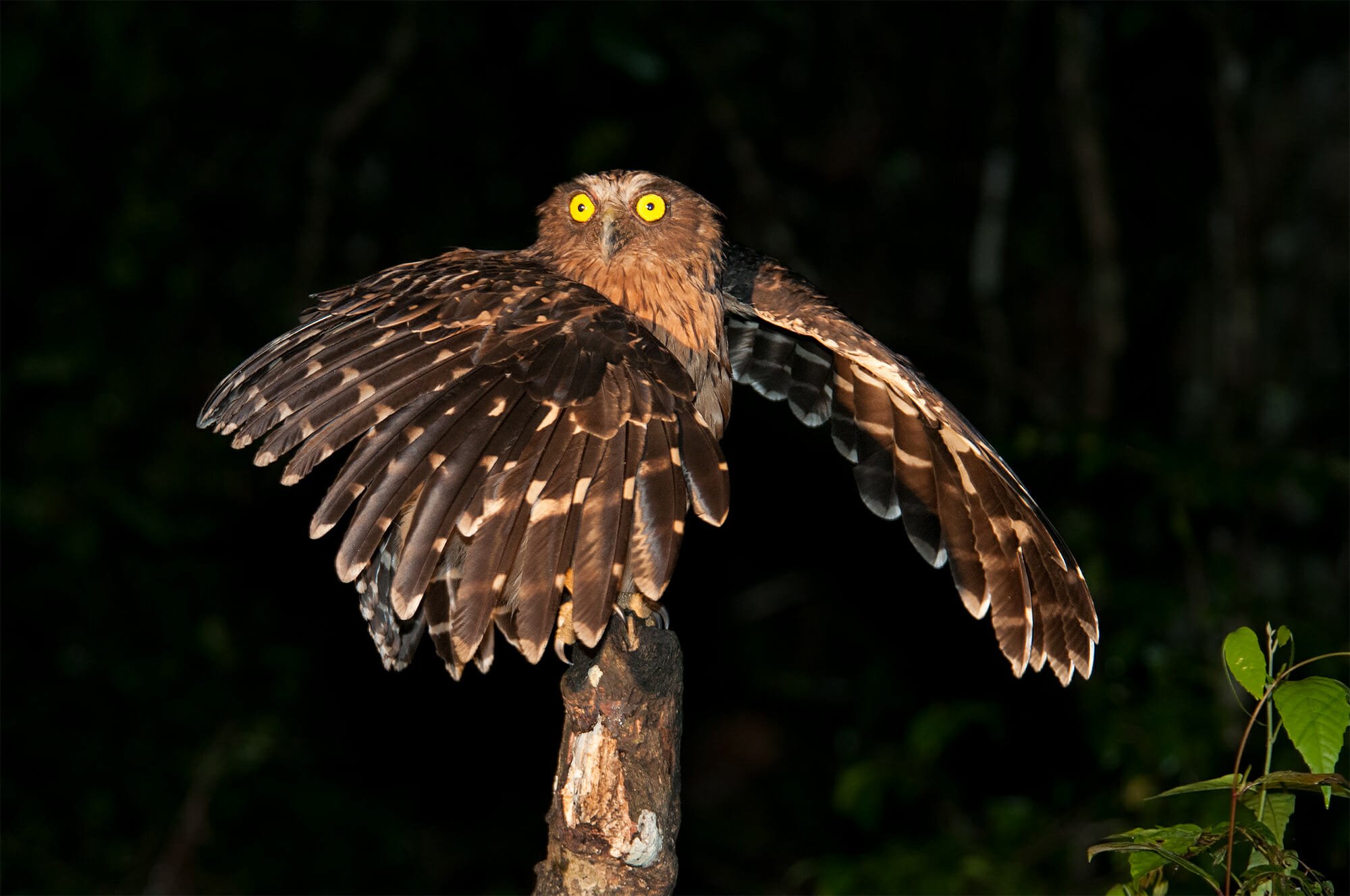
We leave the loris to its nightly exploits and surprise a Buffy fish owl that has just landed on a weathered tree stump rising out of the water in the middle of the river. With its massive wings outstretched, it follows us with a piercing gaze of its huge yellow eyes that give its face a perpetually baffled expression.
The only creature that is not surprised by our appearance is the tiny and incredibly bright Blue-eared kingfisher. Perched on a thin branch overhanging the river, it lifts its head towards the dark sky and pretends not to see us drifting slowly with the current right underneath it.
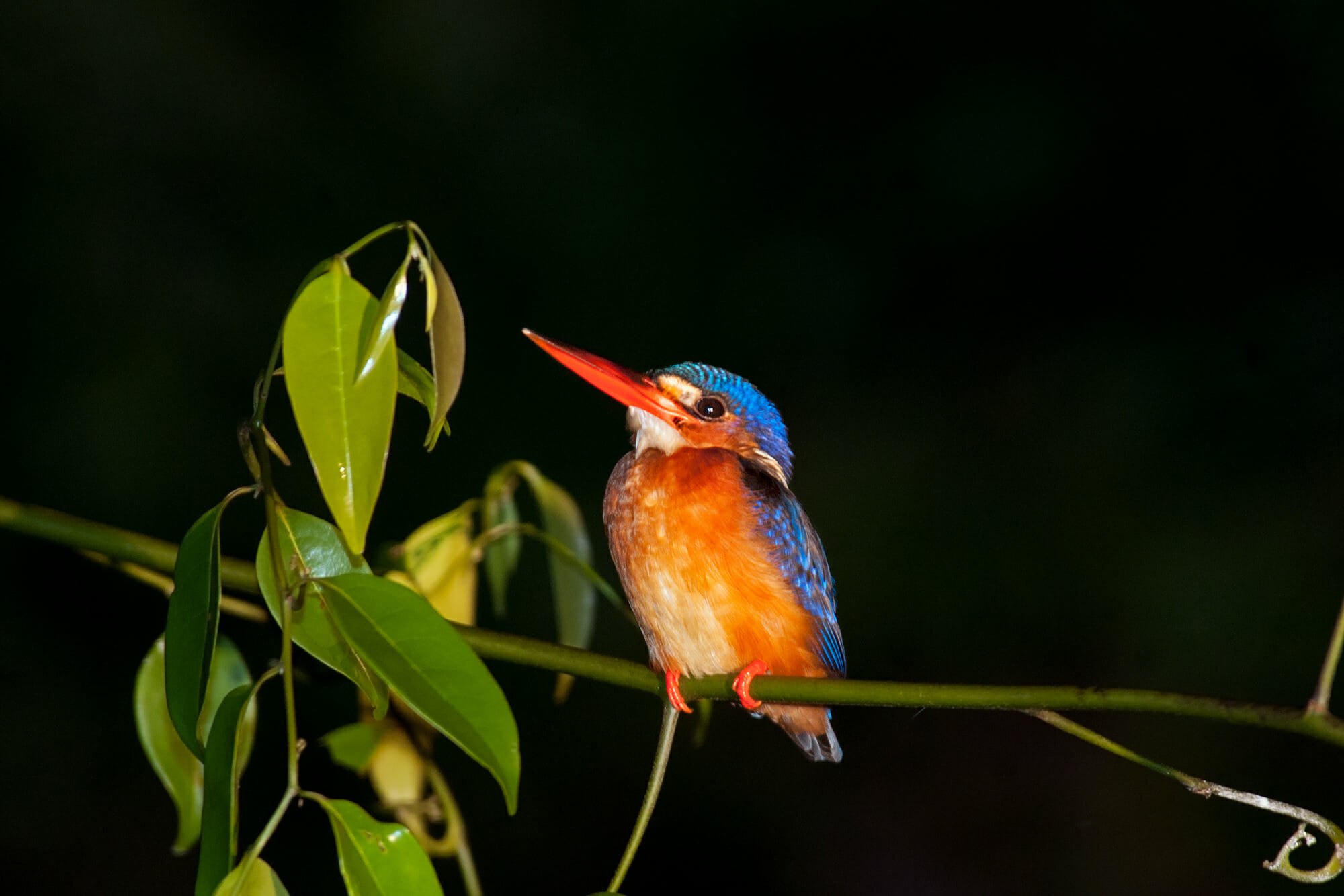
Overnight we stay at Osman’s homestay. It is a large wooden house with a spacious veranda lifted on stilts over the bank of the river. Above the TV, in between Islamic calligraphy art, hang photographs of Osman with Sir David Attenborough.
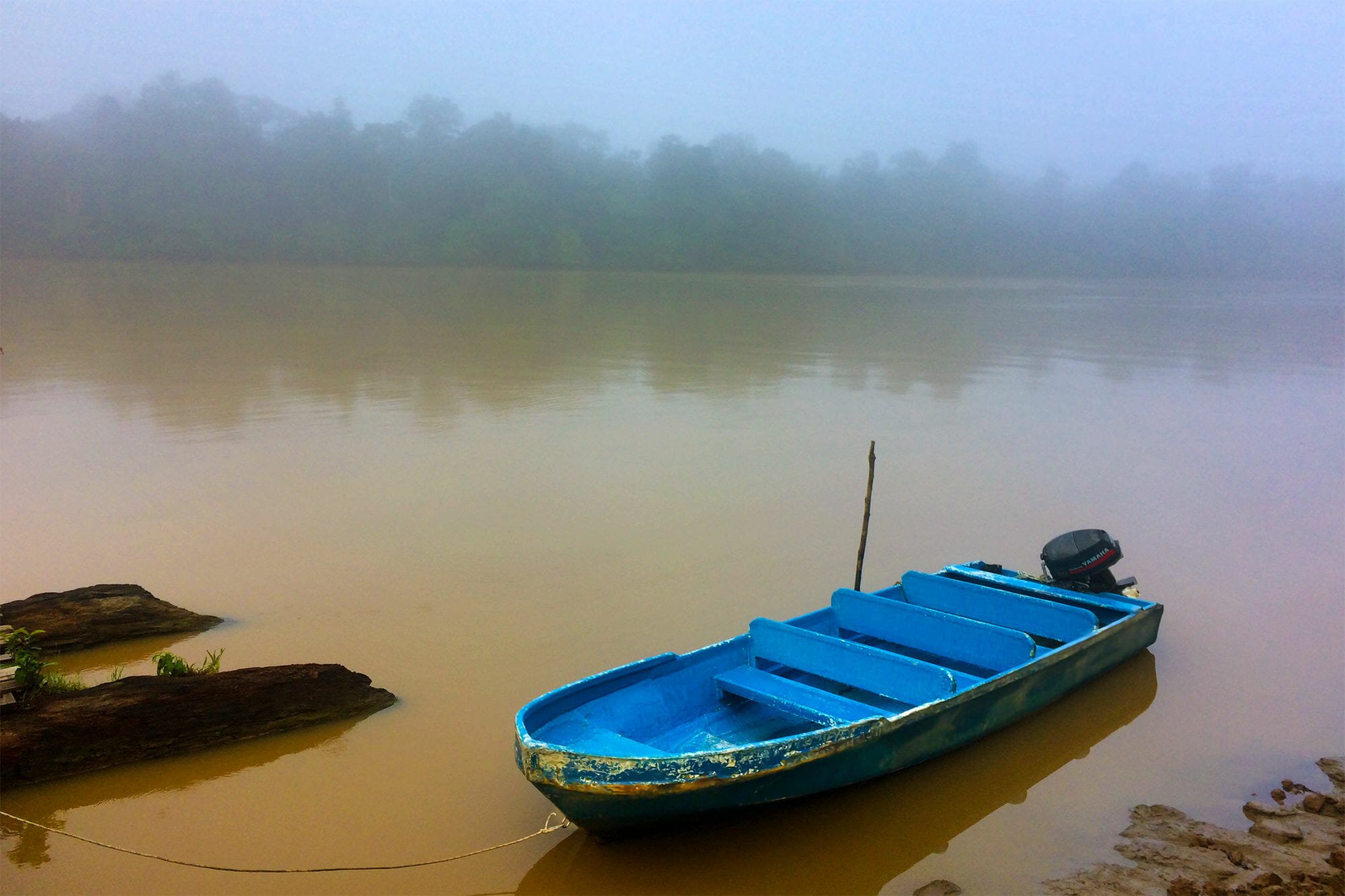
The next afternoon, we return to Menanggul and find ourselves in a completely different world. By day, the river is bursting with life. Noisy hornbills fly overhead, Proboscis monkeys crash through the canopy, and Pig-tailed macaques squabble on the river bank while keeping a watchful eye for the crocodiles.
‘Jens, here is something for you’, calls out Mike. ‘There is a snake in the branches up ahead’. We stare at the tree he is pointing at but, unsurprisingly, see nothing. ‘No, two snakes’, pitches in Osman. ‘No, wait, four snakes!’
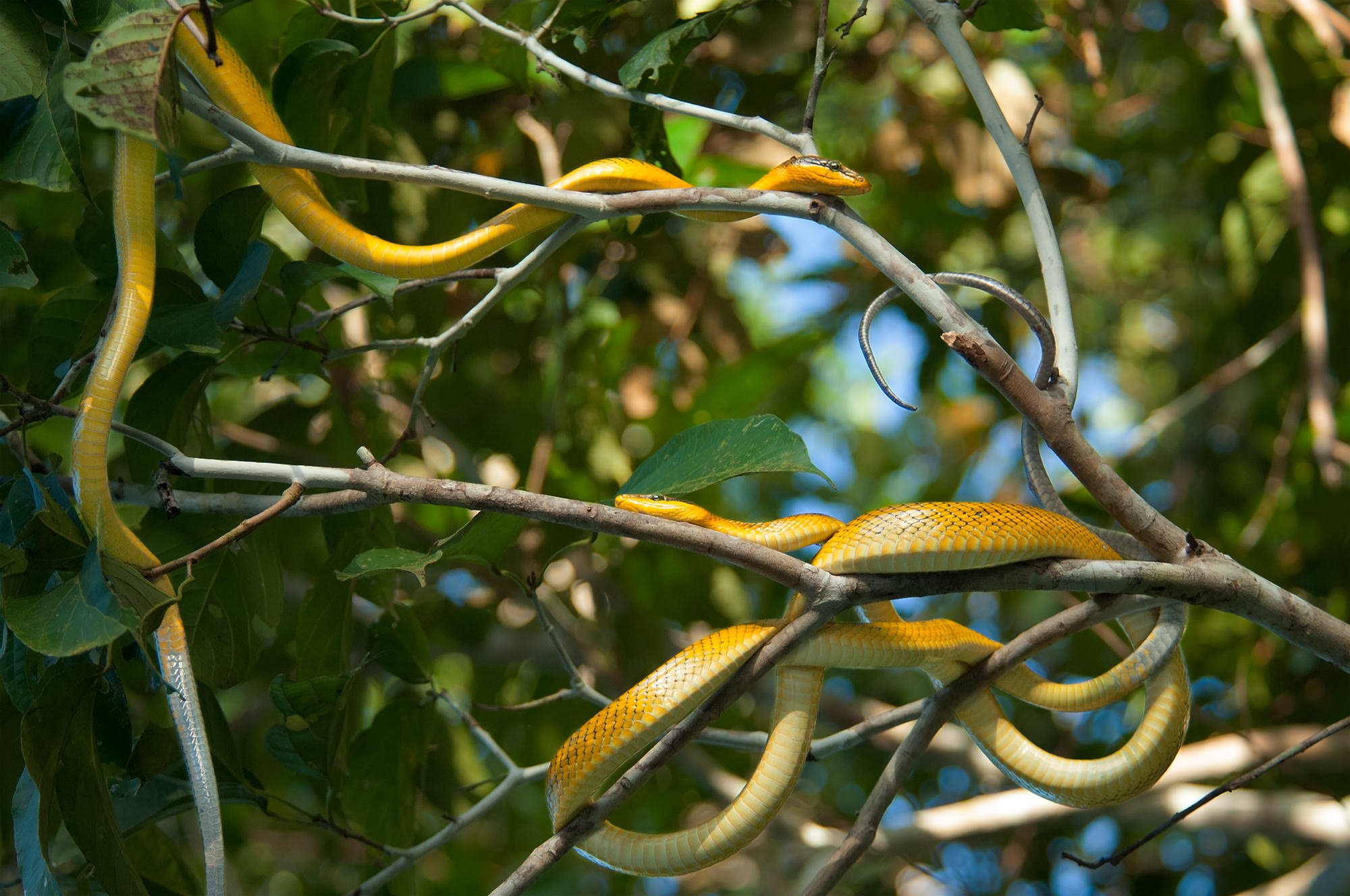
Jens has been dying to see a snake ever since missing one a few days earlier, but four together seems like a bit of a stretch. Yet, as we approach the tree, we are able to make out four bright yellow coiled shapes.
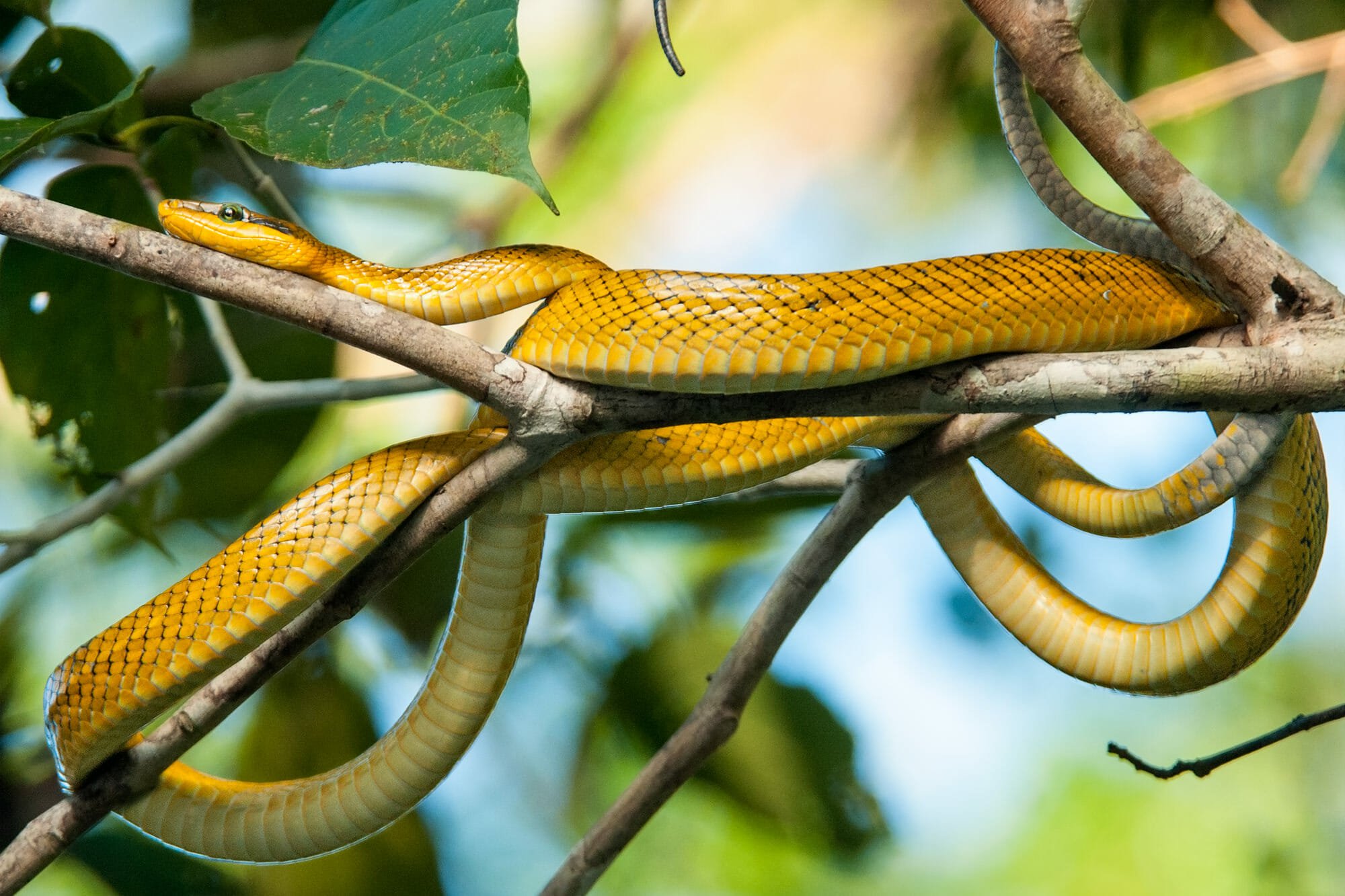
‘Grey-tailed racers’, explains Mike, as we watch the snakes wake up one by one and move languidly through the branches. None of us has seen anything like this before, and in Mike’s and Osman’s cases, that’s saying a lot. Are we witnessing some kind of unknown reptilian behaviour?
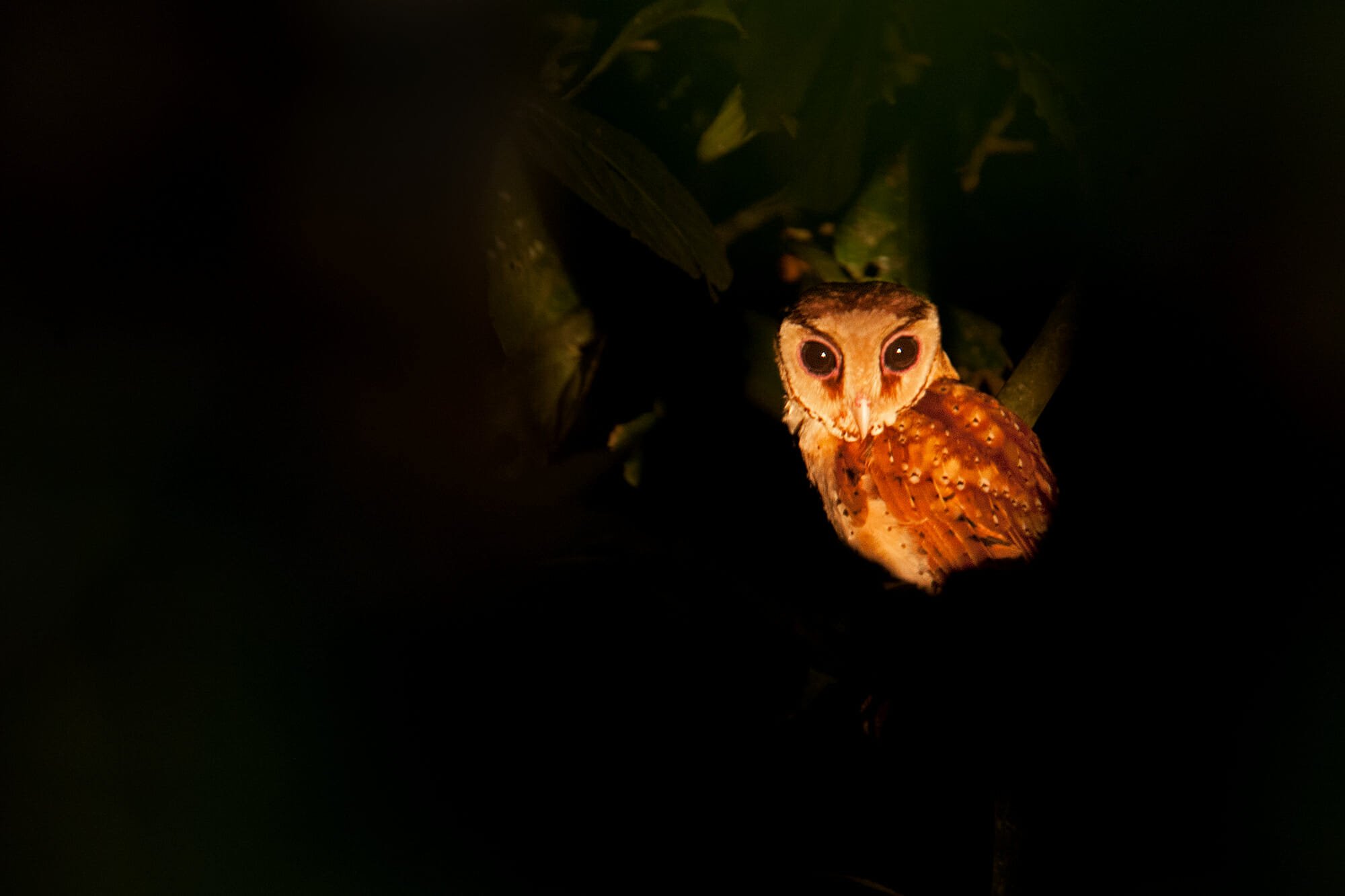
At night, we find another rarity – an Oriental Bay owl – a bird so rare that even Mike has never seen one before. At first, we hear its call coming from the thick jungle. Mike mimics its call, tricking the bird into believing another owl is challenging it. Outraged, the bird comes to investigate, eventually landing in a reasonably open spot where we can finally see it. It is tiny and looks like most other Barn owls, yet by playing ‘hard to get’ with the bird watchers, it elevates itself to the top of their bucket lists.
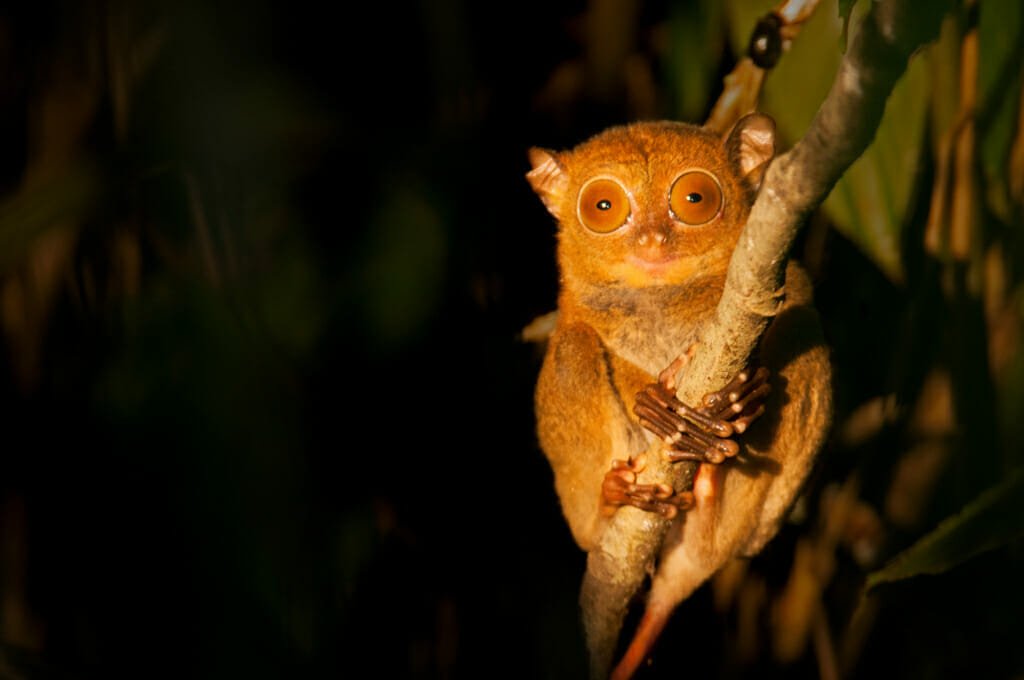
The last encounter we have on the river is with a Western tarsier. A distant relative of all the other primates on the river, this animal is so strange you would think it is made out of spare parts. Its enormous eyes take up most of its face. In fact, each of its eyeballs is as big as its entire brain. Its fingers are so long that some of them reach the length of its entire upper arm. It is a little gremlin out of children’s fairy tales, and an impossibly cute one at that. I see its big-eyed face in my mind long after we leave the river bank.
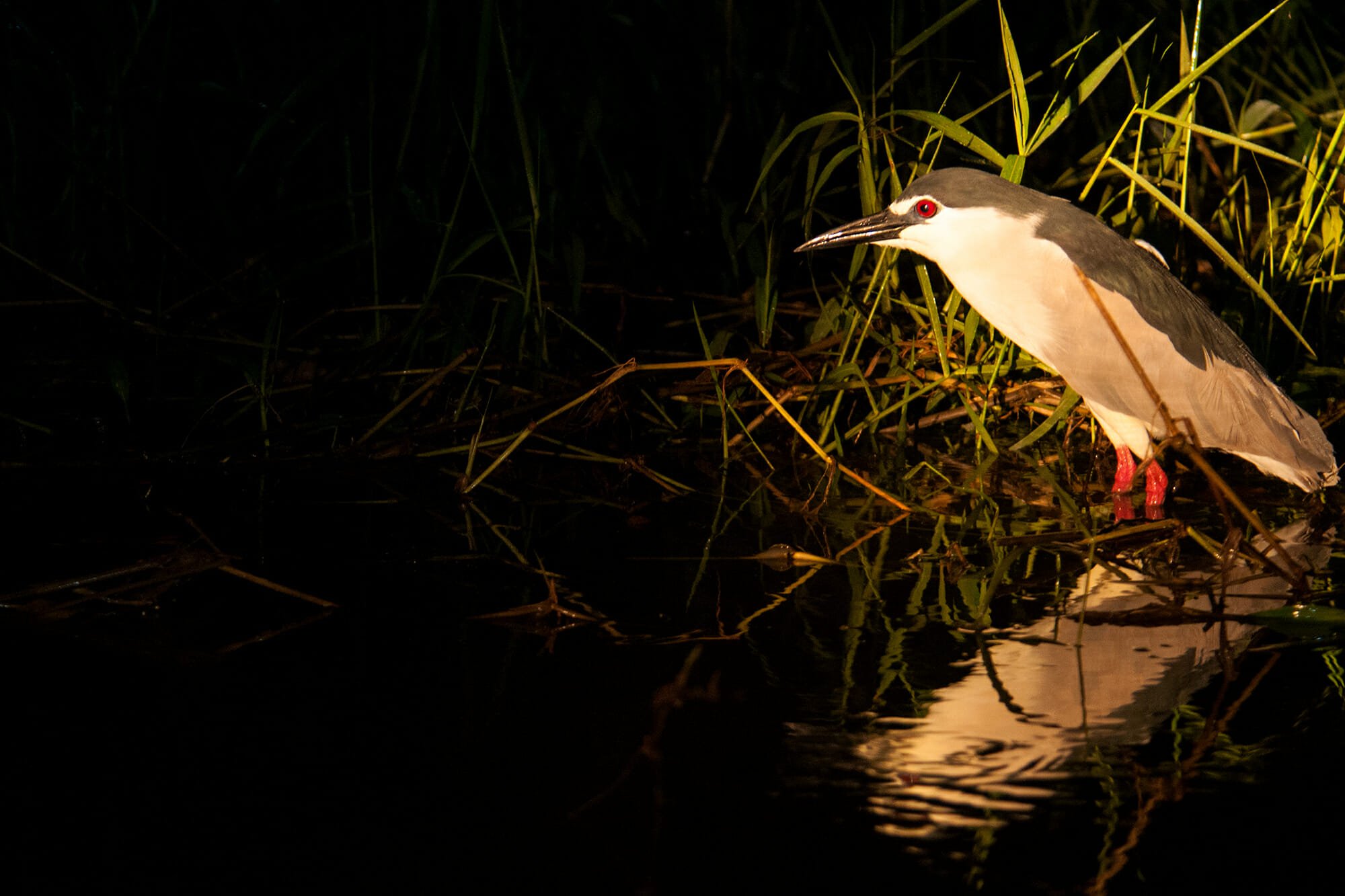
Gomatong Cave
Before leaving Kinabatangan River Sanctuary, we visit Gomatong Cave. The first thing you always notice on entering this vast cave is the overwhelming aroma of guano (bat poop). The smell is so strong it almost brings tears to my eyes as we step into the cave.
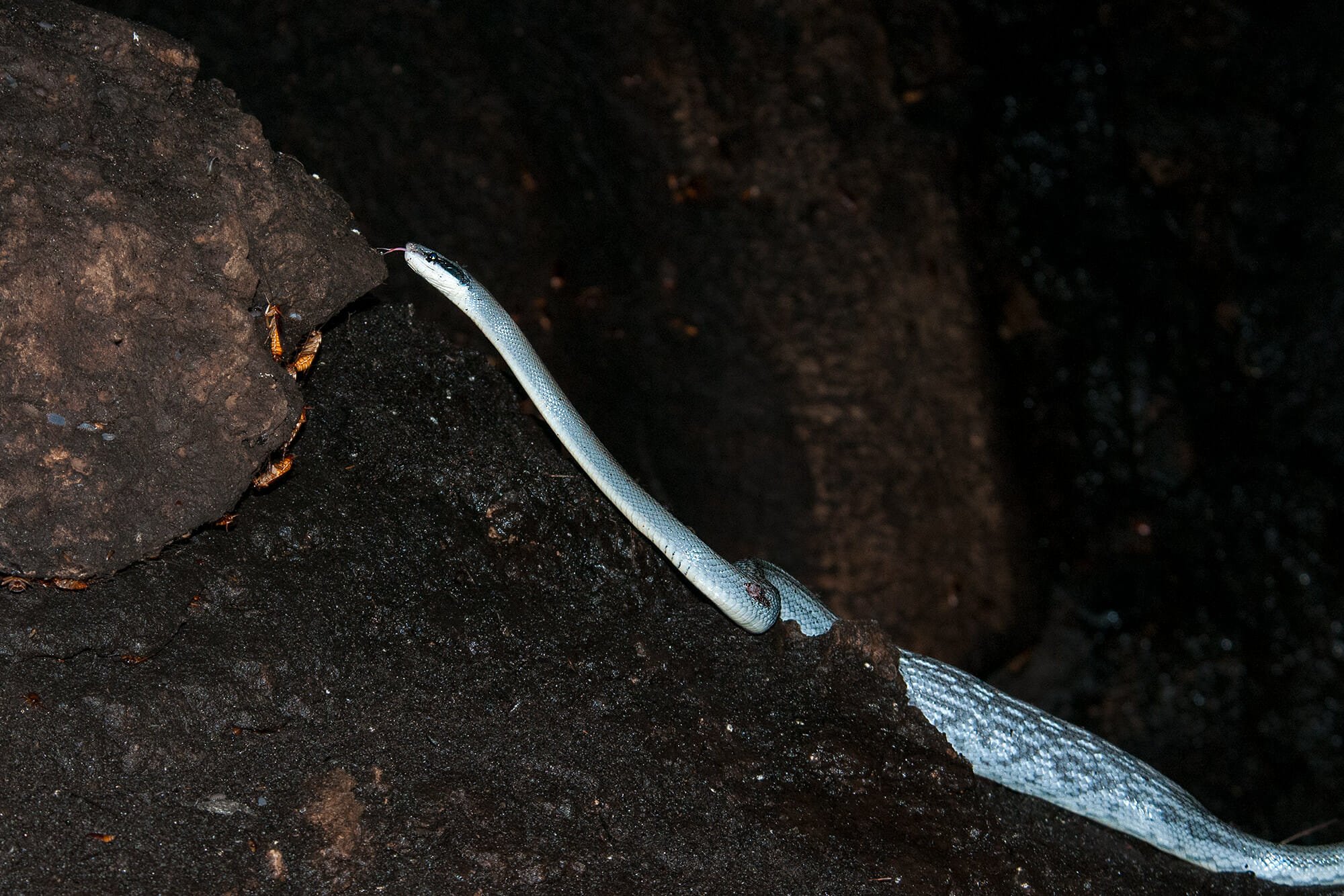
Thankfully, as soon as we enter, we spot a magnificent Cave Racer – quite a sizable snake, with its body swollen with recently consumed lunch. After spending a few minutes with such a striking creature, we all but forget about the smell.
The ceiling of the cave is alive with thousands of swifts and possibly millions of bats, who are responsible for the mountains of guano covering virtually every surface below. The cockroaches, on the other hand, are in pleasantly low numbers. On my last visit to Gomatong, the walls of the cave appeared to oscillate with a writhing blanket of cockroaches that covered every surface.
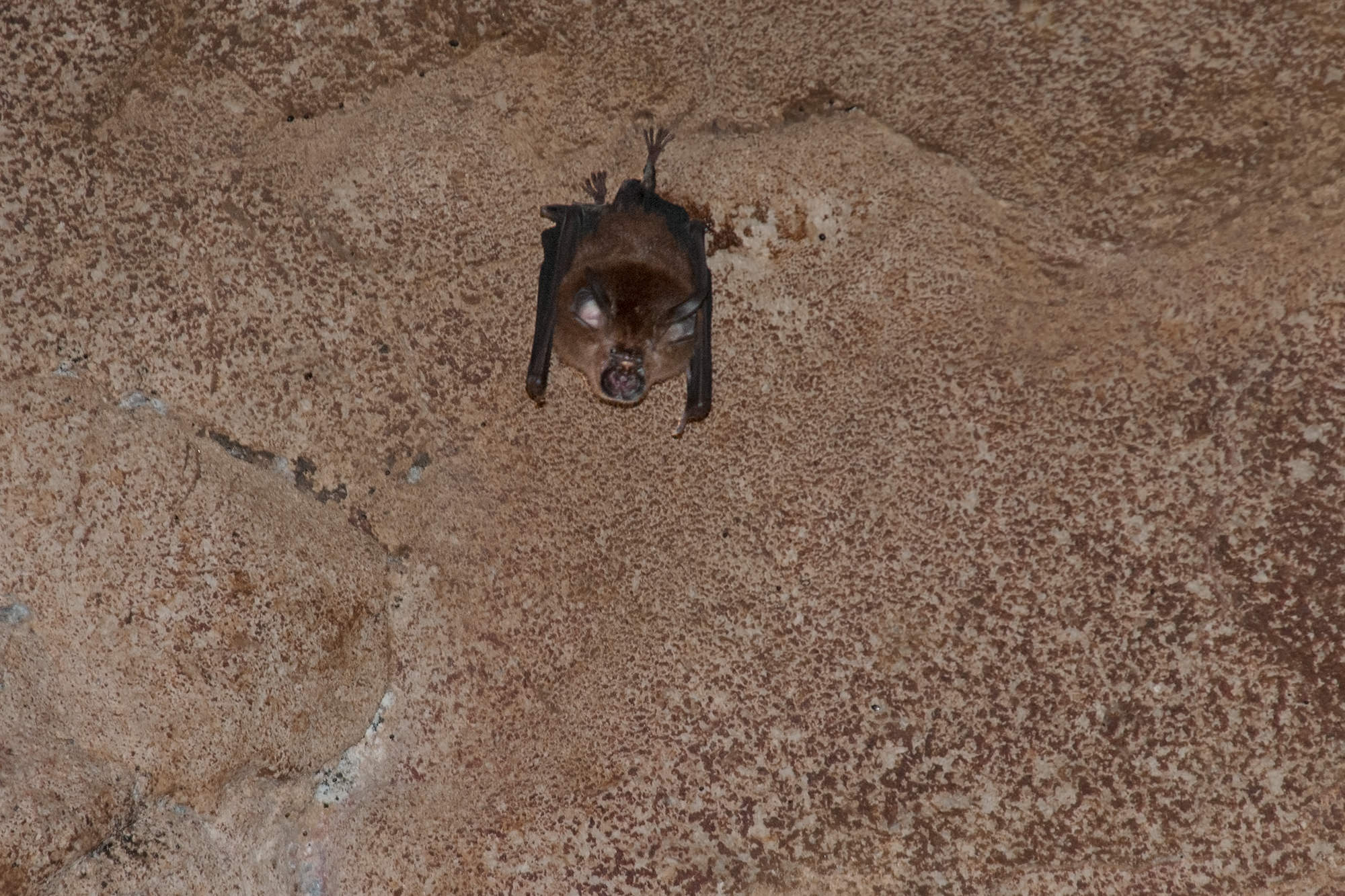
When twilight finally arrives, the bats start to emerge from the cave. At first, it is just a trickle, but soon, it becomes an endless stream that undulates across the sky, attempting to confuse the predators. And the predators, indeed, are starting to gather.
A Brahmini kite patrols the sky, a Crested Serpent eagle perches just below the mouth of the cave from which the bats were emerging, and soon, Bat hawks arrive and begin snatching flying bats with incredibly precise, swift attacks. We watch the drama unfold against the dark overcast sky until it is finally time for us to leave.
Is the Kinabatangan River Cruise Worth it?
Absolutely! Borneo is one of the best places in all of Southeast Asia to see wildlife in its natural habitat, and the Kinabatangan River cruise is one of the best ways to discover the island’s incredible wildlife. If you are a wildlife watcher, you can’t miss Kinabatangan!
More on Borneo Wildlife
- 4 Days in Danum Valley: Ancient Rainforest and Spectacular Wildlife
- Guide to Planning Kinabatangan River Cruise in Borneo
- 28 Incredible Borneo Animals and best places to see Borneo wildlife
- On the trail of the Amazing Sunda Clouded Leopard in Borneo
- A Different Kind of Borneo Wildlife Holidays: Deramakot Forest Reserve
- Where to see wild cats in Borneo?
- On the trail of the Flat-headed cat in Borneo

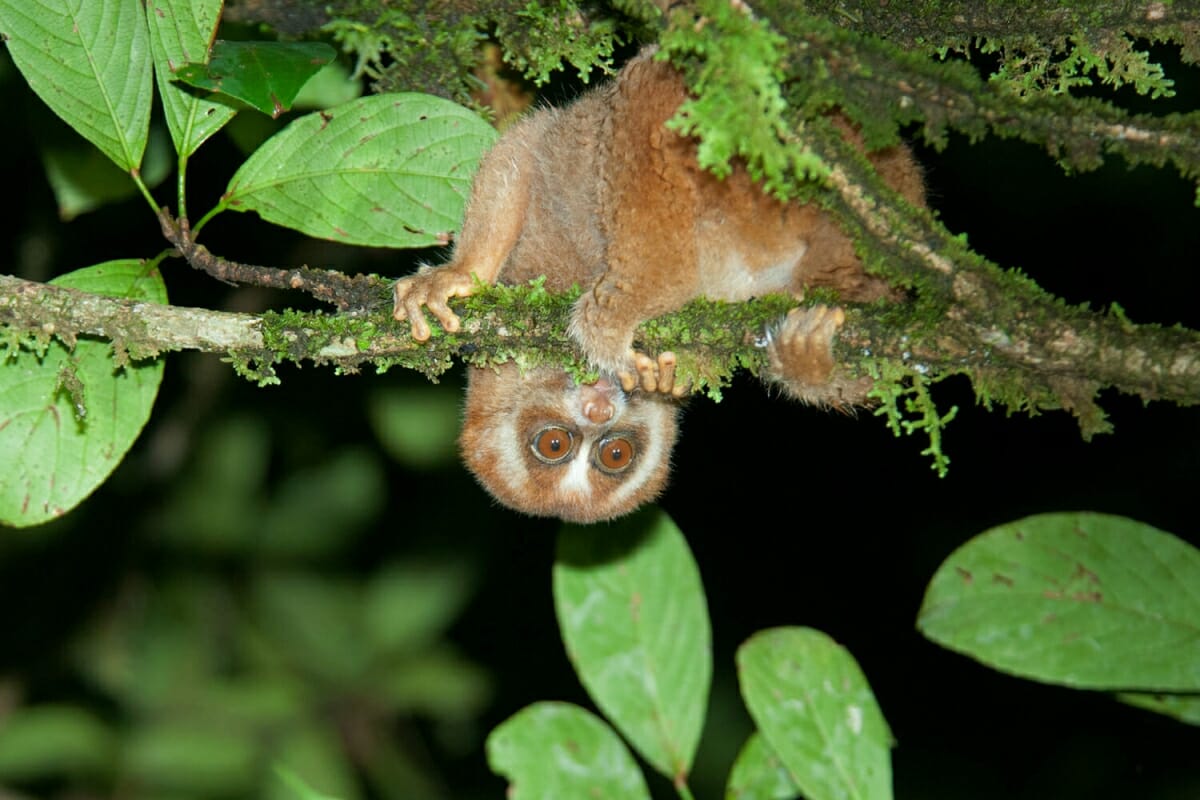
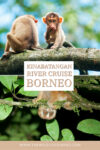
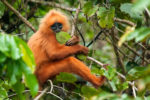
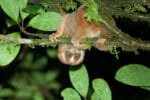
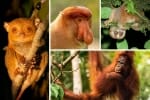
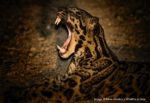
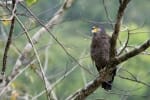
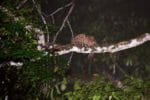
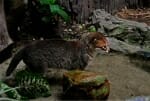
amazing! planning my trip now! I have two weeks (13 days after flights) so trying to make the most of my time but don’t want to rush each location (I’m thinking Kinabatangan River, Danum Valley, & Kota Kinabalu). Curious, but what type of lens do you use? Your pictures are amazing, but curious how strong of a lens I’ll need to get such close pictures.
Thanks for the great info!
Hi Chantelle, Kinabatangan River is one of the best places in the world to get close to wildlife. The water acts as a natural barrier and animals are quite at ease on the river. I use an 80-400mm lens on a cropped sensor camera, which is equivalent to about 600mm lens. But of course, I don’t always use it at full zoon. You’ll get some close-ups with a 300mm lens, especially on the river.
Have a fantastic trip!